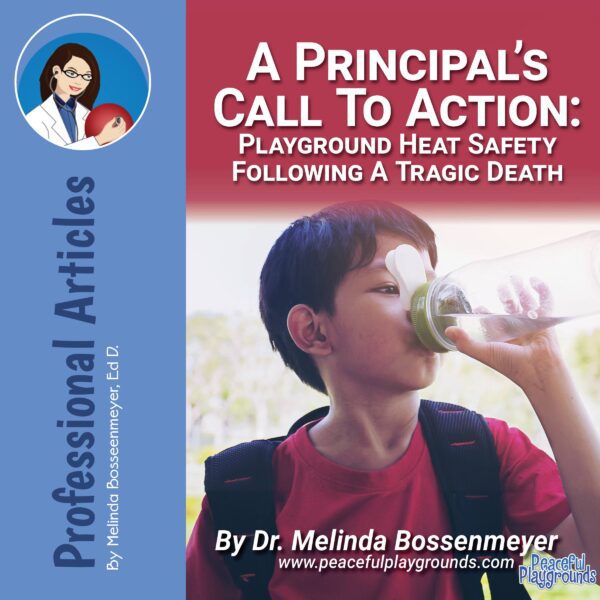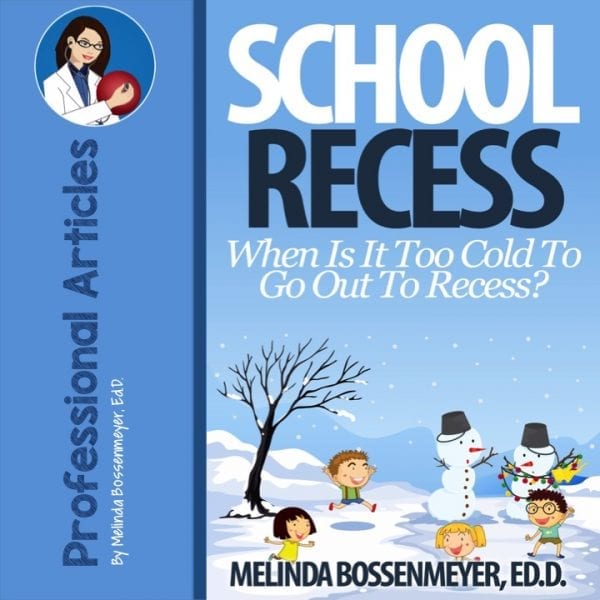A Principal's Call to Action on Playground Heat Safety Following A Tragic Death
By Dr. Melinda Bossenmeyer

As a principal, the well-being of students extends far beyond test scores and classroom curriculum. It encompasses their safety throughout the entire school day, from the quiet focus of morning lessons to the exuberant energy of recess. This seemingly carefree time for play and social interaction can quickly turn dangerous when scorching temperatures transform the playground into a potential health hazard.
The death last year of Yahushua Robinson, a student who died from heatstroke during physical education class, serves as a heartbreaking reminder of the very real dangers posed by extreme heat. Yashushua Robinson's death occurred in Lake Elsinore at Canyon Lake Middle School. I live in Canyon Lake, CA where the temperature reaches 107 on many days in the summer when students attend year-round school. We are located 80 miles southeast of Los Angeles and about 60 miles west of Palm Springs, CA.
Student Heat Guidelines
While many states have adopted guidelines to protect student-athletes during practices and games, these protections often fail to encompass all students throughout the entire school day, particularly during unstructured recess periods and physical education.
A proposed bill in California would require the California Department of Education to establish heat safety protocols for public schools which is a critical step in the right direction. But we cannot afford to wait for legislation to catch up with the urgency of this issue.
The playground transforms beneath the summer sun. Slide surfaces that were cool to the touch in the morning become searing hot by midday. Play structures designed to encourage climbing and exploration turn into heat traps, absorbing the sun's rays and radiating them back onto unsuspecting students. Even seemingly harmless activities like running across the blacktop can lead to heat exhaustion or worse in extreme temperatures.
The consequences of heatstroke on the playground are severe and can be life-altering. Children, with their smaller bodies and less developed thermoregulatory systems, are particularly susceptible. Symptoms like dizziness, nausea, and headaches can quickly escalate to confusion, seizures, and even coma. The long-term effects of heatstroke can include organ damage and even death.
The following recommendations are some proactive steps that schools can take, to ensure the safety of our students during recess, especially during the scorching summer months. To begin the school and community commitment to go beyond simply adhering to minimum requirements to creating a culture of heat awareness and implementing preventative measures before heat-related illnesses have a chance to occur.
The Heat Index: Beyond Air Temperature
Our first line of defense is a focus on the heat index, not just the air temperature. The heat index combines temperature and humidity, providing a more accurate picture of how hot it feels and the potential risk of heatstroke. This allows us to adjust recess schedules and activities based on real-time conditions, rather than relying solely on arbitrary temperature thresholds.
Seeking Refuge in the Shade
Shade is our most valuable resource during the summer. Strategically placing shade structures throughout the playground, ensuring readily accessible cool havens for students to escape the direct sun during peak heat hours is critical. These structures should be regularly inspected and maintained to maximize their effectiveness. Additionally, teachers and staff can encourage students to seek shade proactively, especially during the hottest parts of the day.
Hydration Heroes: Keeping Cool from the Inside Out
Schools should proactively arrange accessible hydration stations throughout the playground. These stations are not simply spigots; they are well-maintained, inviting features that encourage students to drink fluids regularly throughout recess, even if they don't feel thirsty. Try to promote a culture of hydration by reminding students about the importance of drinking water and by leading by example – staff members are encouraged to model healthy hydration habits during recess supervision.
Knowledge is Power: Training for Heat Awareness
Heat awareness training is should not be an afterthought. All recess supervisors receive comprehensive training on heat-related illnesses, including:
Recognizing the early signs and symptoms of heat stroke, dehydration, and heat exhaustion.
Implementing appropriate first aid measures, such as cooling the body and providing fluids.
Knowing when to escalate to emergency medical assistance and how to properly call for help.
This training empowers our staff to identify potential problems early and take immediate action to protect the health of students.
Communication is Key: Partnering with Parents
Maintain open and frequent communication with parents regarding heat safety on the playground. This includes providing them with clear guidelines on how to dress their children appropriately for hot weather. Encourage loose-fitting, light-colored clothing that allows for proper ventilation. Emphasize the importance of sending students to school with properly filled water bottles and remind them to rehydrate throughout the day. A hat is also helpful on hot sunny days.
Beyond the Minimum: Investing in a Safe and Cool Playground
While shade structures and hydration stations are crucial, schools should begin to recognize and plan for the long-term benefits of investing in a more heat-resistant playground. Explore cooling options such as: painting the playground with a special cooling reflective paint for cooling the playground surface and/or replacing blacktop surfaces with cooler materials grass.






